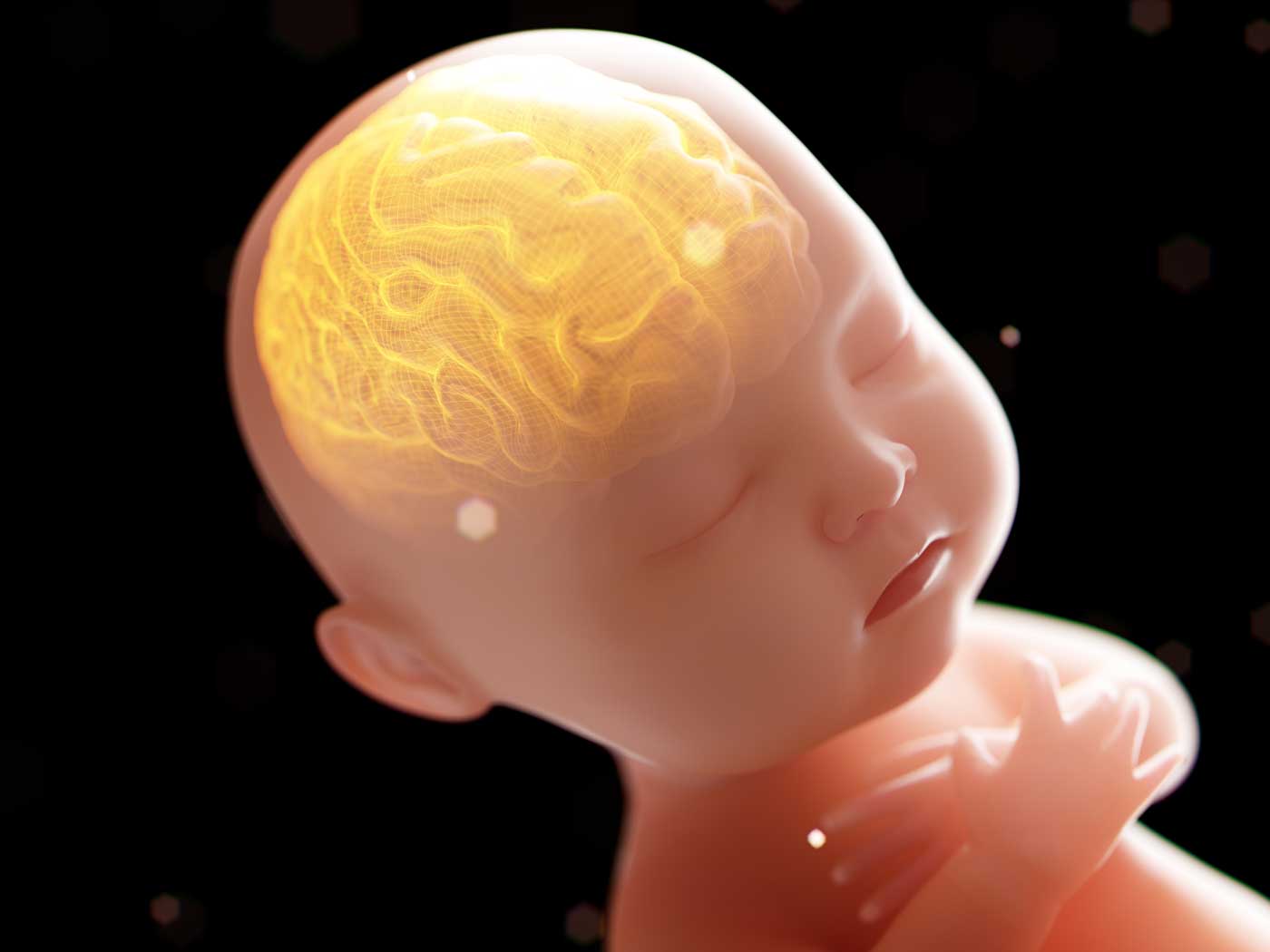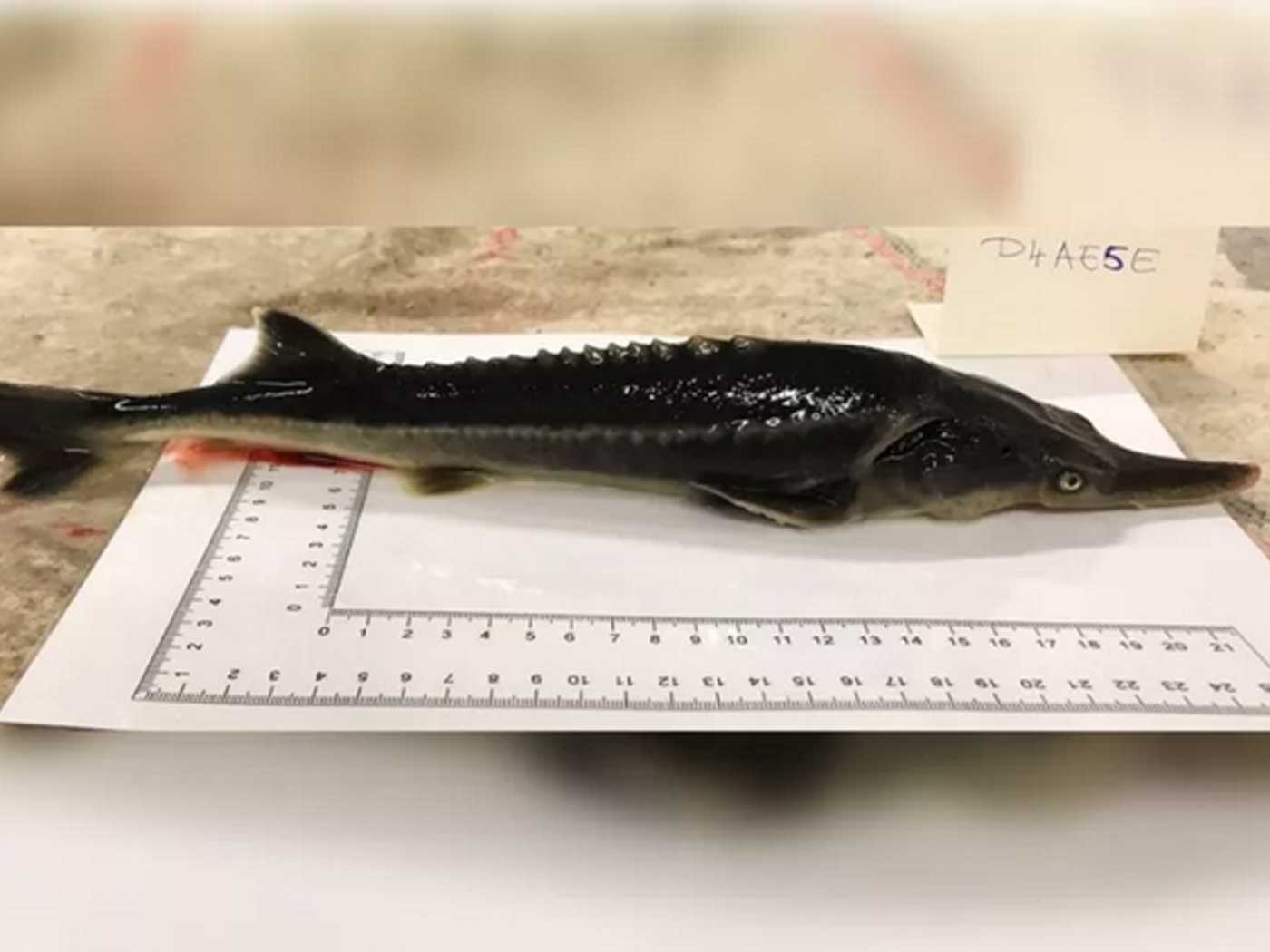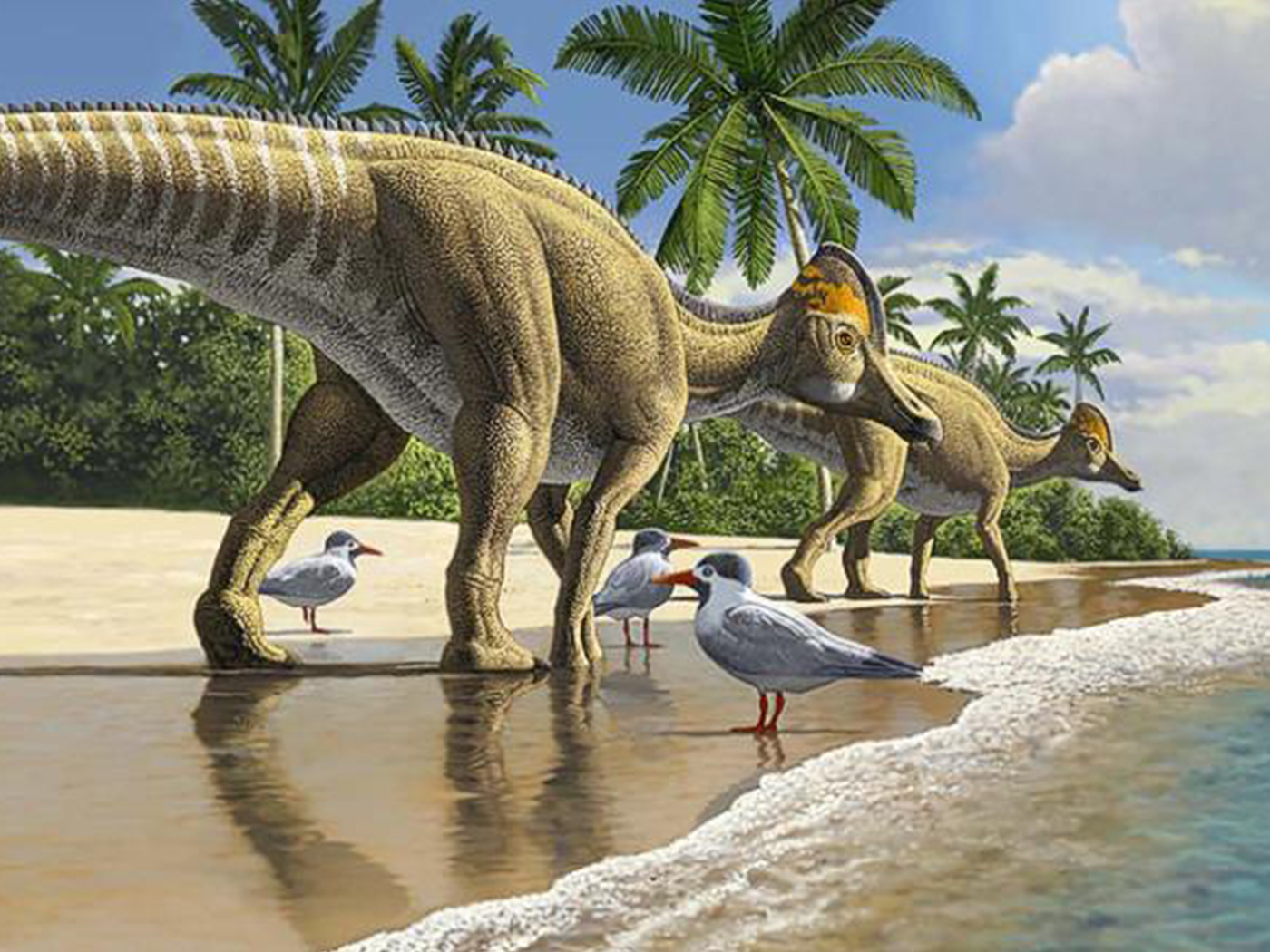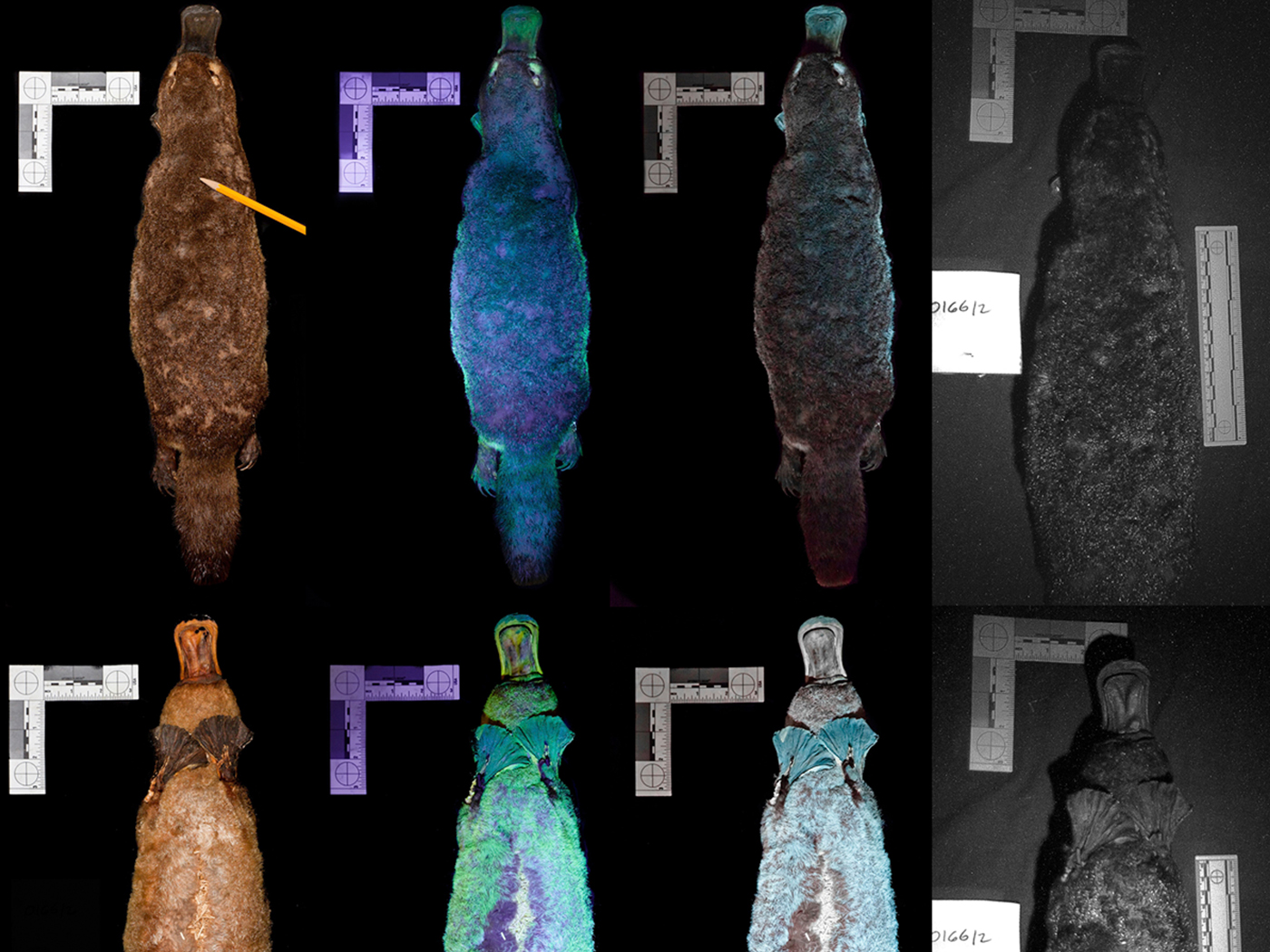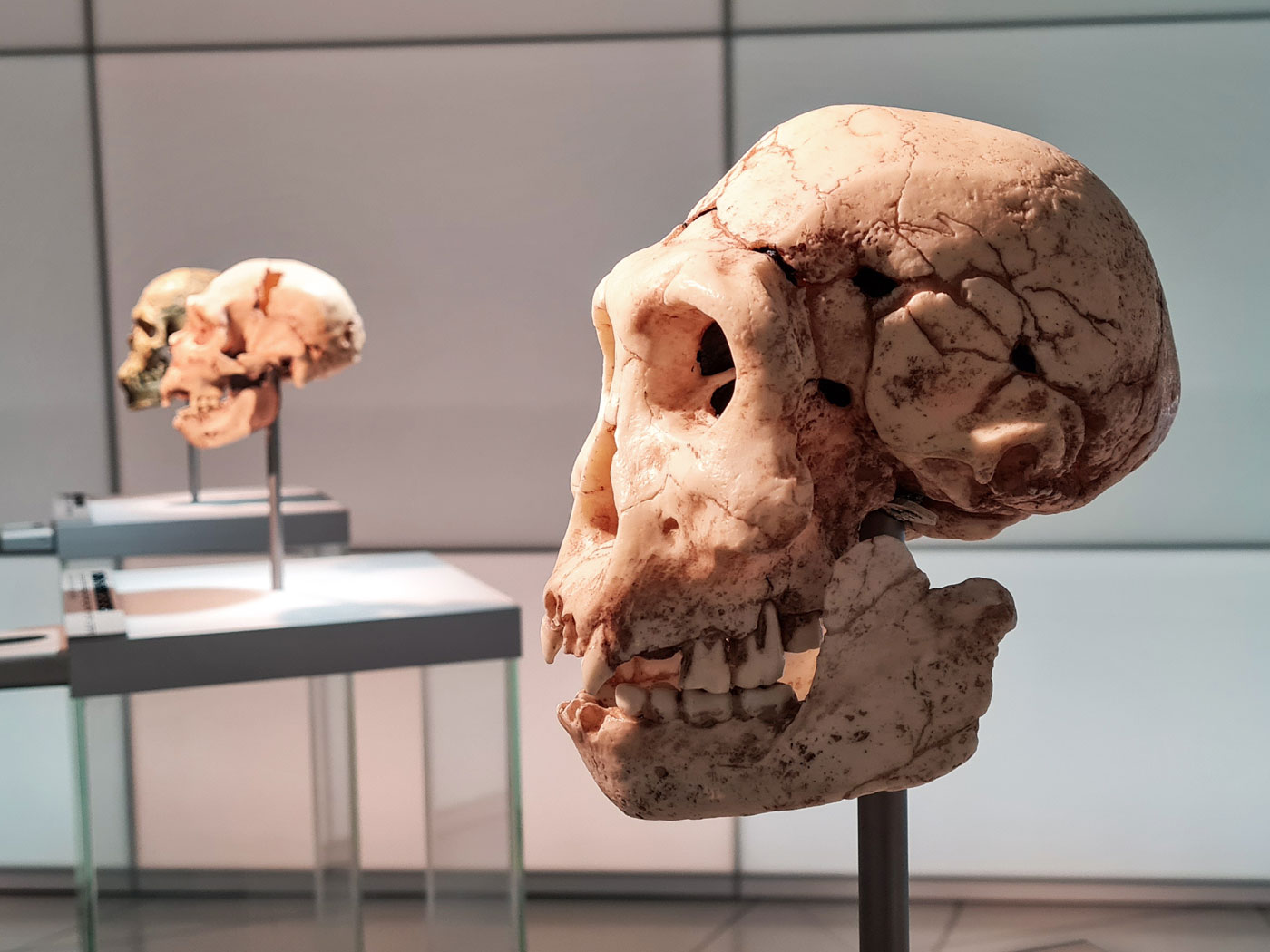Last month, the ICR Discovery Center hosted “Origins: Re-examining the Evidence,” a special event featuring three of ICR’s scientists—experts in geology, fossils and human origins, and genetics. The purpose of the event was to explore claims secular anthropologists have made about supposed ancestors of modern humans. ICR’s Dr. Jeff Tomkins, Dr. Tim Clarey, and Dr. Brian Thomas each presented compelling arguments from scientific and biblical evidence for why these evolutionary human origins claims have no legitimate basis and are often founded on faulty assumptions, bad evidence, and wishful thinking.
Dr. Brian Thomas, an expert on fossils, began the event with his presentation “Adam, not Ape.” He addressed multiple evolutionary icons of human origins, exposing flaws in the biological and anatomical features of the specimens, and offering a biblical perspective on why humans were created fully human from the beginning. His talk focused on several different fossil specimens that have been touted as ancestors of humans both in scientific textbooks as well as in pop culture. As he examined each specimen, he assigned them to one of three specific categories—animal, imaginary, or human—based upon where the evidence led. After re-examining the evidence, Dr. Thomas relegated several alleged pre-human creatures such as “Ida” (Darwinius masillae) and “Lucy” (Australopithecus afarensis) to the category of merely extinct animals. Then, among others, he investigated Homo habilis, a claimed “stone age pre-human,” and showed that in actuality this creature was purely the result of a fertile imagination—one that used human bones to contrive a creature that never actually existed. One of the last specimens Dr. Thomas examined was Neanderthals, which has proven to be nothing less than human. Evidence shows that Neanderthals buried their dead, made jewelry, cooked food, and share genetics of 99.7% similarity with modern humans.1 Dr. Thomas wrapped up his presentation by pointing out problems with some of the most recently proposed human ancestors: Homo sediba and Homo naledi. He showed why these skeletal remains also fall flat when they are used to prop up the story of human evolution.
After Dr. Thomas, ICR geneticist Dr. Jeff Tomkins presented “Monkey Business in the Chimp Genome.” He shared his long-term research project that soundly refutes the claim that humans and chimpanzees are 98% similar. Many evolutionary proponents have argued that human DNA is so close in structure and type to chimps that we are no-doubt closely related. However, what most people do not know is that these arguments are based upon limited comparisons of human and chimp DNA strands that purposefully exclude large segments of the DNA that are not similar, and instead selectively match up sections that meet the evolutionary story’s requirements. Dr. Tomkins has spent many years thoroughly examining the full genomes of the chimpanzee and human, and has found that when the DNA is matched up in its entirety, the overall similarity drops to about 84% maximum.2 This is a far cry from what the evolutionist community has been proposing for many years.
Dr. Tim Clarey’s presentation “Hoaxes of Human Evolution” concluded the event by offering his perspective as a geologist on the human origins debate. His talk began by addressing anomalies and contradictions between claims made by secular anthropologists, and then turned to a discussion of the rock layer that contains fossilized footprints in Laetoli, Tanzania. These footprints, fossilized in claimed volcanic ash, are said to belong to an alleged closely related ancestor to modern humans: Australopithecus afarensis (“Lucy”). Dr. Clarey pointed out that recognizing major problems and inconsistencies with the reliability of dating methods, as well as the problems associated with the dating of sedimentary units (where the minerals merely give a maximum age), could lead to a much different conclusion than what the evolutionists claim. Rather than the fossilized footprints belonging to Lucy and supposedly dating back 3.6 million years, Dr. Clarey believes these footprints could be actual human footprints from the time of the Ice Age, around 3800 to 4,500 years ago. Next, Dr. Clarey examined the claims of Dr. Lee Berger, who discovered fossils belonging to a creature he later dubbed Homo naledi after finding them in the Dinaledi Chamber of the Rising Star Cave system in South Africa. Dr. Clarey pointed out some major challenges with Dr. Berger’s claims that Homo naledi deliberately buried their dead deep in the back of a very complex, and often difficult to access, Rising Star Cave system.3 The claim is that this surmised purposeful burial indicates advancement in the evolutionary development of human ancestors. Dr. Clarey argued that these fossilized specimens were likely not buried deliberately and purposefully at all, but rather were washed into the back of the cave system by localized flooding. This perspective lends itself well to the actual geology of the cave system and other evidence found in the caves. Dr. Clarey wrapped up his talk by encouraging the attendees to not be fooled by wishful thinking and stories made by evolutionist’s claims, but to always examine the evidence in light of Scripture and using critical thinking.
Attendees left the event with solid evidence against the evolutionary progression of primates to humans, having a better understanding of major problems with the secularist’s stories of human origins, and having heard insightful and clear evidence from science and Scripture for why humans are unique and created in God’s image. One attendee commented, “This far exceeded my expectations. The presentations were all very interesting, and the idea of having these seminars is great. Thank you!”
Our goal with these special events is to encourage and equip the attendees with scientific evidence that confirms creation and gives them answers to share with those around them.
While the ICR Discovery Center is currently closed temporarily due to the coronavirus pandemic, the Events staff continues to work behind the scenes to develop ideas for additional special events like this at the Discovery Center once we are allowed to re-open. Follow ICR on social media, and keep checking ICR.org/events regularly to received updates on when our next special event will be.
References
1. Thomas, B. 2016. Why Did Neanderthals Look Different From Us? Acts & Facts. 45(7).
2. Tomkins, J. P. 2018. Separate Studies Converge on Human-Chimp DNA Dissimilarity. Acts & Facts. 47(11).
3. Clarey, T. 2017. How Did Homo naledi Get in That Cave? Acts & Facts. 46(10).
*Joel Kautt is an Event Coordinator at the Institute for Creation Research.
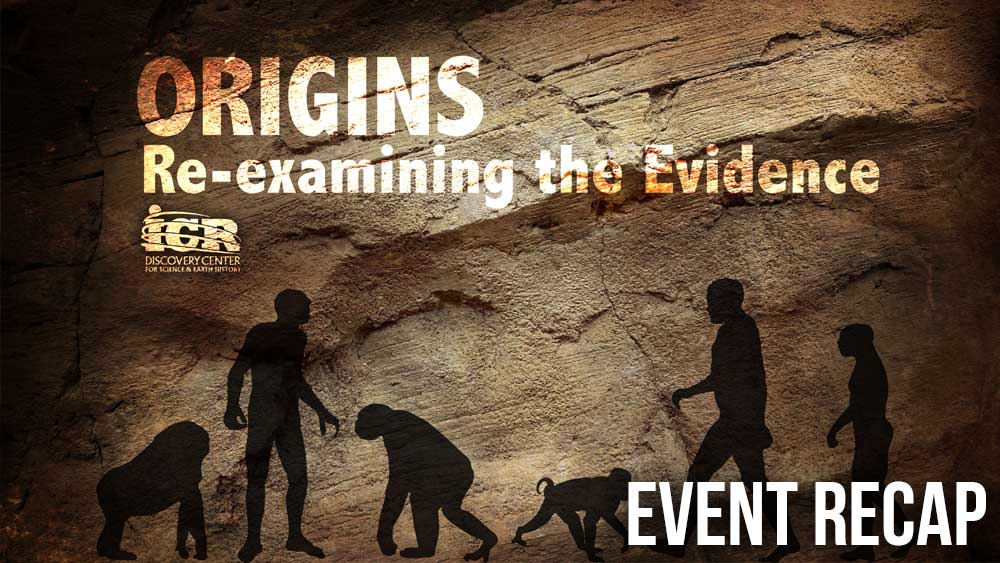
Event Recap: ICR Scientists Examine Human Origins
The Latest
May 2024 ICR Wallpaper
"Have I not commanded you? Be strong and of good courage; do not be afraid, nor be dismayed, for the LORD your God is with you wherever you...
Was a Key to Photosynthesis Evolution Discovered?
Northern Canadian lakes were the source of recently discovered unique photosynthetic bacteria of the phylum Chloroflexota. After years of culturing,...
CREATION PODCAST
Four Moons That Indicate a Young Universe | The Creation Podcast:...
Earth has one moon, but Jupiter has many! What can we learn from our celestial neighbor's satellites? Do they indicate youth?
Host...
Creation Kids: Seeds and Sprouts
by Renée Dusseau and Susan Windsor*
You're never too young to be a creation scientist and explore our Creator's world. Kids, discover...
APOLOGETICS
Christ’s Creativity in Canyon Critters
Grand Canyon animals display many marvelous traits and behaviors as they live life in that harsh habitat. These canyon creatures succeed thanks to the...
Standing Against False Science
I’m Michael Stamp, and I’m in my 12th year as an editor at the Institute for Creation Research. It’s always an encouragement to see...
Oysters and Pre-Flood Longevity
The oyster species Crassostrea virginica, also known as the eastern oyster, is a prized seafood. Research has demonstrated that a fossil version of...
Galápagos Finches: A Case Study in Evolution or Adaptive Engineering?
A group of birds known as Darwin’s finches live in the Galápagos Islands, which are located in the Pacific Ocean 600 miles west of Ecuador....
Hot Springs National Park: Hydrothermal Springs Formed By The...
Hot Springs National Park is located about an hour southwest of Little Rock in the folded Ouachita Mountains of central Arkansas. It is the second smallest...
Why Biology Needs A Theory of Biological Design—Part 2
“Based on a true story” is included by movie producers to add authenticity, importance, and a flair of anticipation. So, my account of how...





